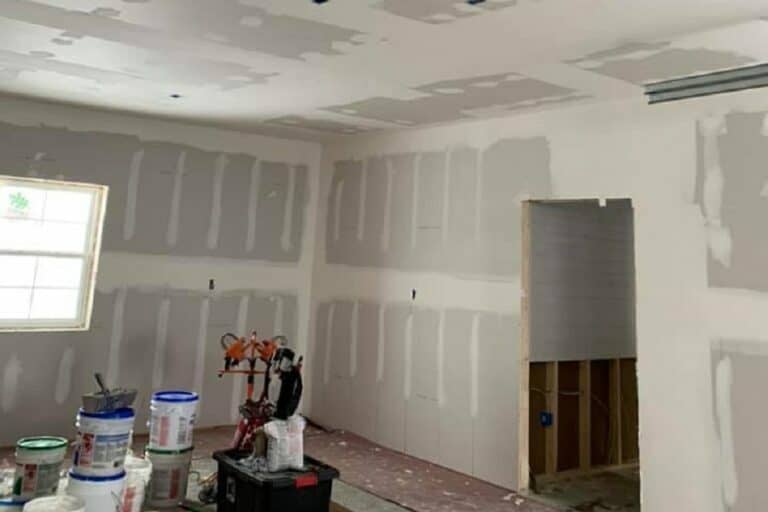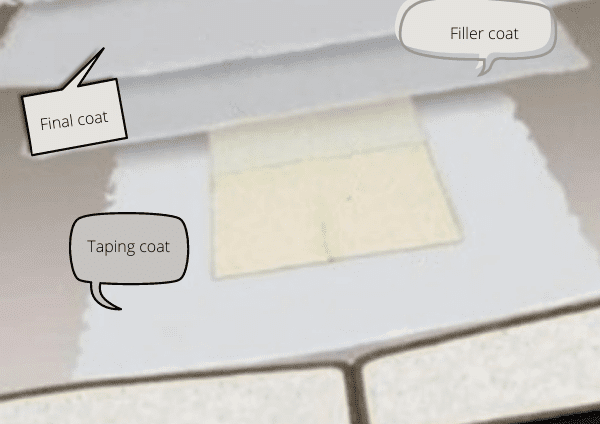
Do I Tape or Mud On Drywall First [Explained & Solved]
Tapping and mudding are regularly used on drywall projects. Tape and mud fix any joint or gap in drywall.
Now can be a question, tape or mud which should apply first?
It depends on which type of tape or project you work on. Generally, with paper tape, mud is used as the setting compound of the tape. So the mud is used first then paper tape. If you use mesh tape, first mash tape use on drywall joints, then apply mud.
In this article, I am going to explain more about the topic. Let’s jump in.
In what order should I tape drywall?
To apply joint compound mud, it is mainly divided into 3 layers. Tapping layer, filling layer, final layer.

You must use a tapping layer when you go with paper tape. The tapping layer should fill with ¼-inch thick mud. Then apply tape on the mud. After drying the tap, you should apply continuous filler and a final layer of mud.
For mush tape, you do not need to apply tapping layer mud. The tape has the adhesive ability under the back for attach on drywall.
Just use the mush tape, Then apply filler and the final coat of mud.
However, you can apply more layers of mud on drywall to make the surface more smooth. And it will be good practice.
How to use drywall tape and mud
You should follow the above orders to apply drywall tape.
You can check the video as a tutorial. The video shows how to use paper tape on drywall.
Should I tape joints during or after an initial fill with a setting-type compound?
If your joint gap is mid to small, less than ½ inch, you can use the setting type of joint compound.
For small joints like ¼ inch, you should directly use compound and then apply paper tape on it.
Apply tape on wet mud. It will cover the gap. Also, the tape will stick hard and dry with mud.
If the gap size ½ uses mush tape, then apply your joint compound on it.
If the gap size is more than ½ inch, use different methods to fill the gap. After that, you can apply joint compound as a tapping layer.
You can check this article where I explain how big gap can fill drywall compound.
Can I tape over mud?
Yes, the paper tape should be used over mud. And it is the right practice.
The mud setting layer is called tapping mud layer. This layer needs a minimum of ¼ inch thick and 4-6 inches wide of mud. And next, use the tape.
However, the tapping mud layer can not be used for mush tape. The tape is directly used on drywall.
Can I apply drywall mud on wet tape?
It is not possible to apply mud on wet tape. Because very recently applied tape on tapping mud. It needs some time to dry both the tapping mud and tape.
Give it time for a dry minimum of 12 hours, then apply the first layer of mud on tape.
Can drywall tape be applied after the mud has dried?
Drywall paper tape will not work if drywall mud dries because tape needs a wet mud surface for the stick.
However, if you used joint compound to fill the gap, and it dries, apply mud again, then use tape on it.
If you already paint your house, but you forget prime. You can check this article.
Although mash tape does not need any wet mud to apply, it needs a clean drywall surface to stick well.
How long after taping can I mud?
Mudding dries depending on the weather, joint compound, and what type of project.
Generally, you can use a mud first coat after tapping 12 hours later. However, you can find easy sand 45, 90, etc., type products in the market. This type of joint compound dries very fast. After applying those, you can mud in less time, like 2-3 hours.
But for mash tape, they do not need any tapping compound. So you can apply mud to it instantly.
Conclusion
Mudding is not a very beginner-friendly project. Need some practice and experience before applying.
I hope you got the answer about when and how mud should be used. If you think this article is helpful, share it with your friends and family.